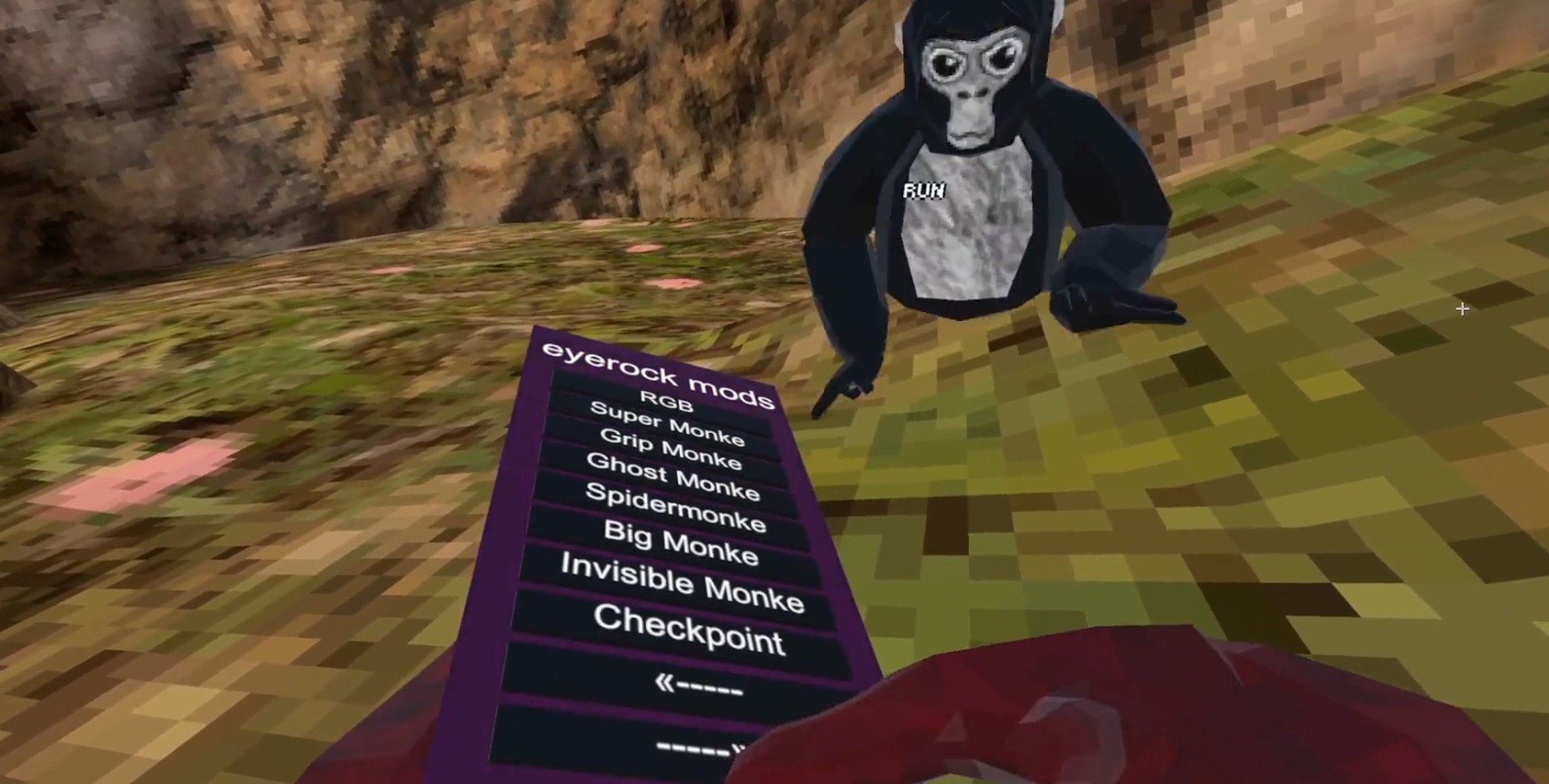Introduction
Discord is a popular communication platform that allows users to create their own servers and communities. Within these servers, it is often necessary to appoint moderators to help manage the community and ensure that rules are followed. Being a moderator on Discord comes with certain privileges and responsibilities, such as the ability to manage users, enforce rules, and maintain order.
In this article, we will walk you through the process of making someone a moderator on Discord. Whether you are a server owner looking to delegate some of the responsibilities or a member who has been given the privilege to appoint moderators, this guide will provide you with step-by-step instructions to make the process smooth and hassle-free.
Before we dive into the details, it’s important to note that only the server owner and those with administrative privileges can assign moderator roles. If you do not have the necessary permissions, you will need to consult with the server owner or an administrator to complete the process.
Now, let’s get started with selecting the right server for assigning a moderator role.
Step 1: Selecting the Right Server
Before you can proceed with making someone a moderator on Discord, you need to ensure that you are on the correct server where you have the necessary permissions to assign roles. If you are the server owner, this step is straightforward as you will have complete control over all server settings. However, if you are not the owner, make sure to communicate with the server owner or an administrator to gain the required access.
To select the right server, simply open your Discord application and look for the server name on the left-hand side panel. Click on the server name to enter the server. You should see a list of text and voice channels, as well as the server members on the right-hand side.
If you are a member of multiple servers, it is crucial to choose the correct server where you want to assign the moderator role. Double-check the server name to ensure that you are in the right place. Assigning the moderator role on the wrong server can lead to confusion and mismanagement.
Remember, each server operates independently, so the process of assigning roles may vary from server to server. Keep this in mind as you proceed with the following steps to make someone a moderator on Discord.
Step 2: Navigating to Server Settings
Once you have selected the appropriate server where you want to assign the moderator role, the next step is to navigate to the server settings. This is where you will find all the configuration options for your server, including roles and permissions.
To access the server settings, locate the server name on the left-hand side panel of your Discord application. Right-click on the server name and a drop-down menu will appear. At the bottom of the menu, you will see an option that says “Server Settings.” Click on it to proceed.
Alternatively, you can also access the server settings by clicking on the small server name icon located at the top-left corner of the screen, below the Discord logo. This will open a drop-down menu where you can select “Server Settings.”
Upon clicking on “Server Settings,” a new window will open, displaying all the available configuration options for your server. This window is divided into different sections, such as “Overview,” “Moderation,” “Roles,” “Channels,” and more. For our purpose of assigning the moderator role, we will focus on the “Roles” section.
Click on the “Roles” tab to proceed to the next step, where we will dive into the role settings and create a new moderator role.
Step 3: Accessing Role Settings
Now that you have navigated to the server settings, the next step is to access the role settings. This is where you can create and manage different roles within your Discord server, including the moderator role.
Within the server settings window, click on the “Roles” tab. This will bring up a list of all the existing roles in your server, including default roles like “Admin,” “Member,” and “Bot.”
To create a new role for moderators, click on the “+ Create Role” button located at the top-right corner of the roles list. This will open the role creation window where you can customize the settings for the new role.
In the role creation window, you can customize various aspects of the role, such as the name, color, and permissions. Give your moderator role a name that clearly indicates its purpose, such as “Moderator” or “Staff.” You can also choose a color for the role to make it visually distinct.
To ensure that the moderator role has the necessary permissions, it’s important to configure the permissions settings. By default, the new role will have no permissions assigned to it. To grant moderator privileges, tick the boxes for the desired permissions.
The specific permissions you choose to assign will depend on the responsibilities and level of authority you want to give to your moderators. Some common permissions for moderators include the ability to manage messages, kick or ban users, and mute or deafen members in voice channels.
Take the time to carefully review and select the appropriate permissions for your moderator role. Once you are satisfied with the role settings, click on the “Save Changes” or “Create Role” button to create the new moderator role.
Now that we have created the moderator role and configured its settings, it’s time to move on to the next step: giving someone the moderator role in Discord.
Step 4: Creating a New Role
After accessing the role settings in your Discord server, the next step is to create a new role specifically for moderators. This role will grant the necessary permissions and privileges to those who will be assigned as moderators.
To create a new role, click on the “+ Create Role” button located at the top-right corner of the roles list in the server settings. This will open the role creation window, where you can customize various aspects of the role.
Start by giving the role a name that clearly identifies its purpose, such as “Moderator,” “Staff,” or any other relevant designation. You can also customize the color of the role to make it visually distinguishable from other roles.
Navigate through the permission settings and select the appropriate privileges that moderators should have. These permissions can include managing messages, kicking users, banning members, and more. Choose the permissions that align with the responsibilities you want your moderators to carry out.
It’s important to strike a balance with the permissions you assign. Giving too many privileges can lead to abuse of power, while giving too few can limit the effectiveness of the role. Take your time to carefully review and select the necessary permissions.
Once you have customized the role settings, click on the “Save Changes” or “Create Role” button to create the new role. The role will now appear in the roles list within the server settings for you to assign to the desired individuals.
With the new role created, we can now move on to the next step: assigning the moderator role to someone in your Discord server.
Step 5: Assigning Moderator Permissions
Now that you have created the moderator role in your Discord server, the next step is to assign the necessary permissions to ensure that the moderators can effectively carry out their responsibilities.
To assign moderator permissions, go back to the server settings and click on the “Roles” tab. Locate the moderator role you created in the roles list and click on the “Settings” icon (it looks like a gear) next to the role name.
This will open the role settings window, where you can further customize the role and manage its permissions. In this window, you will see different categories of permissions, such as General Permissions, Text Permissions, Voice Permissions, and more.
Review each category and carefully select the permissions you want to grant to the moderator role. Depending on the preferences and needs of your server, you may decide to give moderators the ability to delete messages, manage channels, or even move members between voice channels.
Due to the sensitivity and potential abuse of certain permissions, it’s important to approach this step with caution. Only grant permissions that are necessary for the smooth operation of your server and moderation process.
Once you have reviewed and adjusted the permissions for the moderator role, click on the “Save Changes” or “Apply” button to finalize the settings. The moderator role now has the appropriate permissions, allowing individuals assigned to the role to effectively carry out their duties.
Now that we have assigned the necessary permissions to the moderator role, we can proceed to the final step of making someone a moderator on Discord: giving them the role.
Step 6: Giving Someone the Moderator Role
After creating the moderator role and assigning the necessary permissions, it’s time to give someone the coveted moderator role in your Discord server. This will grant them the authority and responsibilities associated with being a moderator.
To give someone the moderator role, start by opening the server settings and navigating to the “Members” tab. Here, you will see a list of all the server members.
Locate the member whom you want to make a moderator and click on their name. This will bring up their user profile and additional options, including the ability to assign roles.
Click on the “+ Add Role” button to view a list of available roles in the server. Select the moderator role that you created earlier and click on it to assign it to the member.
Upon assigning the role, the member will now have the moderator role and the associated permissions. They will be able to exercise their authority within the server, such as managing messages, monitoring user behavior, and enforcing the server rules.
It’s important to communicate with the newly appointed moderator, informing them about their roles and responsibilities. Offer them guidance and provide any necessary training to ensure that they understand their duties and act in line with the server’s values and guidelines.
If, at any point, you want to remove the moderator role from a member, simply go back to their user profile in the server settings and click on the “x” next to the moderator role. This will remove the role and revoke the associated permissions.
With the moderator role successfully assigned, you have now completed the process of making someone a moderator on Discord. Congratulations!
Remember, maintaining a healthy and inclusive community requires active moderation and ongoing communication with your team of moderators. Regularly review the server settings, update permissions as needed, and support your moderators in their duties to ensure a positive and engaging environment for all server members.
Conclusion
Congratulations! You have successfully learned how to make someone a moderator on Discord. By following the step-by-step guide outlined in this article, you can effectively assign moderator roles, customize permissions, and empower individuals to maintain a healthy and thriving community within your server.
Remember, the role of a moderator is crucial in ensuring that rules are followed, conflicts are resolved, and the overall atmosphere of the server remains positive. Choose your moderators wisely and provide them with the necessary support and resources to fulfill their responsibilities effectively.
Throughout the process, it is important to communicate openly and transparently with your moderators, keeping them informed of any changes or updates to the server rules and guidelines. Regularly check in with them to address any concerns or questions they may have.
Additionally, as your server evolves, you may find the need to adjust permissions or create additional roles to suit the unique needs of your community. Stay attentive to the dynamics of your server and make adjustments when necessary to ensure that your moderators have the tools they need to carry out their duties.
Remember, moderation is a collaborative effort, and it’s essential to work together with your team of moderators to create a safe and welcoming environment for all members. Encourage open communication, provide opportunities for feedback, and celebrate the contributions of your moderators.
By diligently managing your server, selecting capable and responsible moderators, and fostering a sense of community, your Discord server can thrive and become a place where users feel respected, engaged, and valued.
Thank you for reading this guide, and we hope it has been helpful to you. Best of luck in building and managing your Discord server!

























